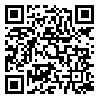
 , F Mansoori *
, F Mansoori * 
 , A Dehhgani
, A Dehhgani 
 , A Najarzadeh
, A Najarzadeh 
 , Z Karimiankakolaki
, Z Karimiankakolaki 
 , ََAA Dehghani Tafti
, ََAA Dehghani Tafti 

Introduction: The text message can be presented as a way to change patterns of behavior-based prevention programs, such as the theory of planned behavior and health belief model to be used., And as an alternative approach to the individual and group training programs should be considered. The present study examined the effectiveness of this new method in promoting food handling behavior of a team of health volunteers on health belief model was based.
Methods: This study was an evaluation of an intervention in which 16 health centers, 200 health volunteers who were actively involved Yazd city who were randomly divided into two groups. After the initial test, chi-square test, t test were analyzed.
The intervention group received an educational package on the SMS regarding food handling behavior on health Belief Model was designed for codification; wantonly within a month and a half a day and after 8 weeks of the last SMS sent from any intervention and control groups was performed in a secondary assessment. Tool for data gathering questionnaire consisting of structures of health belief model including demographic variables, respectively. Data were using 18spss and employing applied, statistical tests of non-parametric Wilcoxon, Mann-Whitney and Kruskal-Wallis, Chi-square and correlation coefficient the analysis was.
Results: The overall food handling behavior, after training significantly increased in the intervention group (p =0/01), while the control group was not significant (p=0/21). Cooling behavior after training in the experimental group and the control group was significantly increased (p =0/00). Cooking behavior, after training in the intervention group (p =0/11) and control group( p =0/17) was not significantly increased. Individual health behavior, after training in the intervention group (p =0/13) and control group (p =0/07) was not significantly increased.
Separation behavior after training has not significantly increased in the intervention group (p =0/73), while the control group was significantly increased (p =0/00). Structures score of perceived susceptibility, perceived severity, perceived benefits, perceived barriers, so after training significantly increased in the intervention group, while the control group than in the other structures perceived severity scores increased significantly observed. (p =0/00)
Conclusion: The results of this study show that the short message service as a new and effective method of Raeder shaping food management practices used.
Received: 2016/05/17 | Accepted: 2016/05/17 | Published: 2016/05/17
| Rights and permissions | |
 |
This work is licensed under a Creative Commons Attribution-NonCommercial 4.0 International License. |
